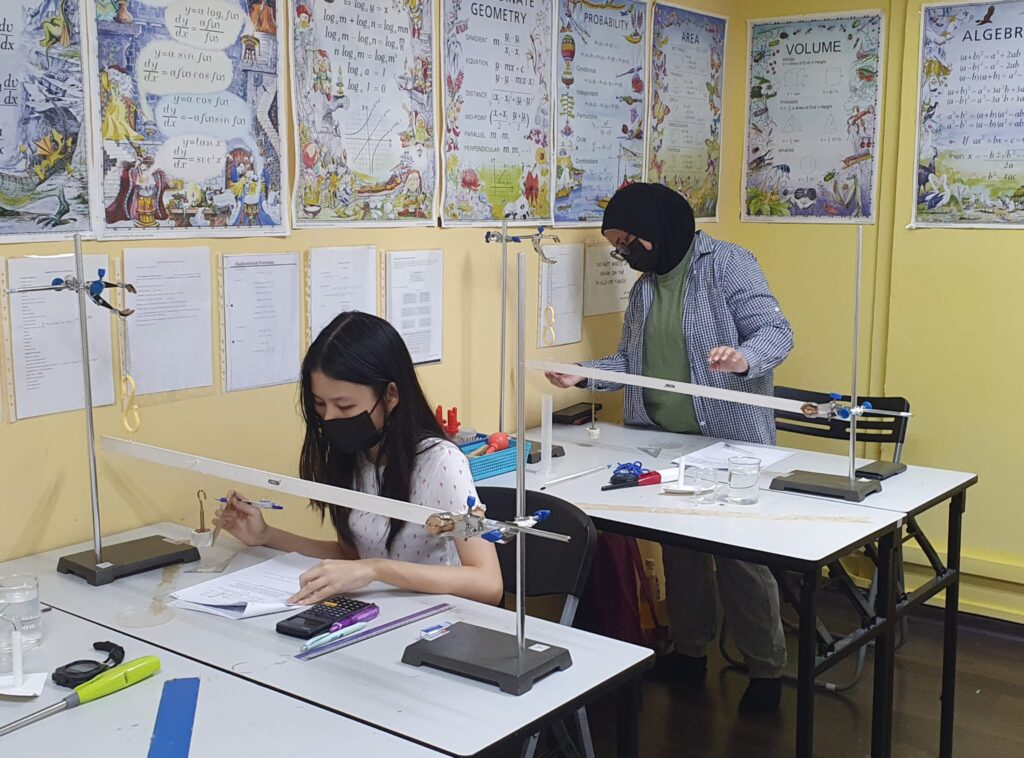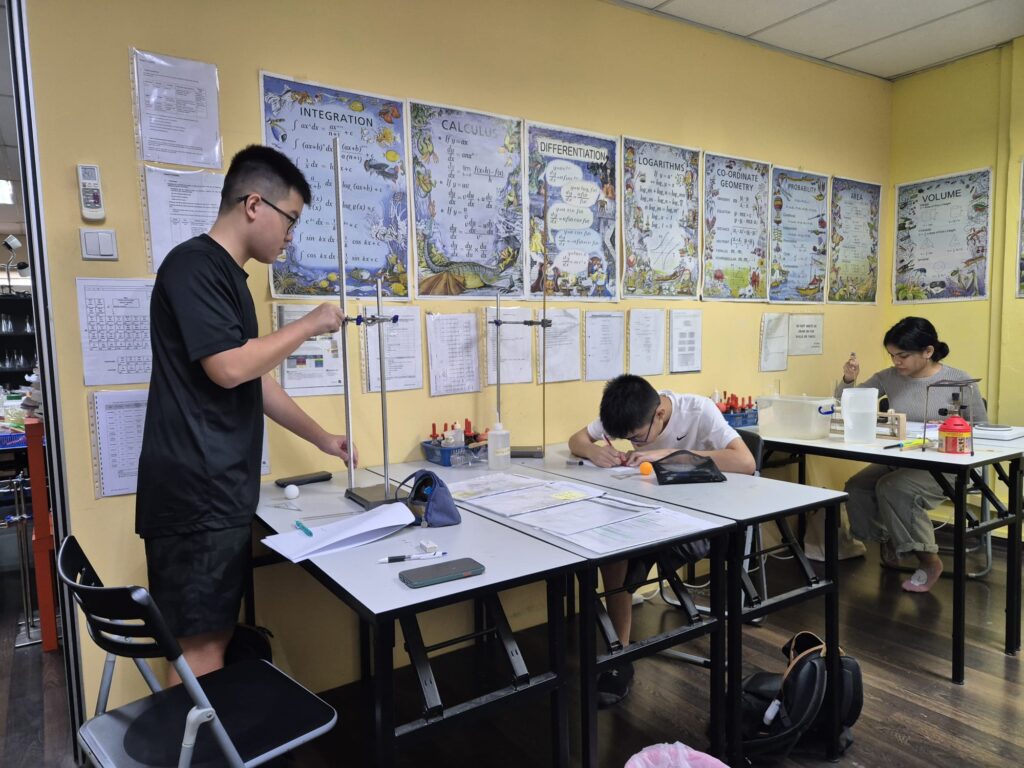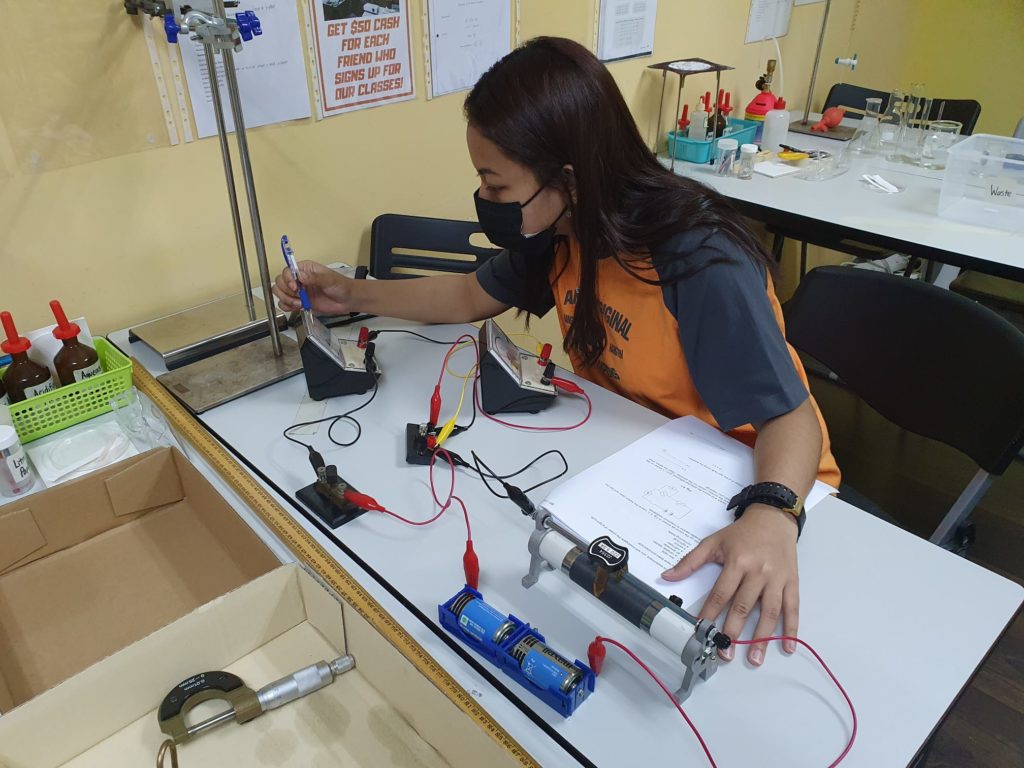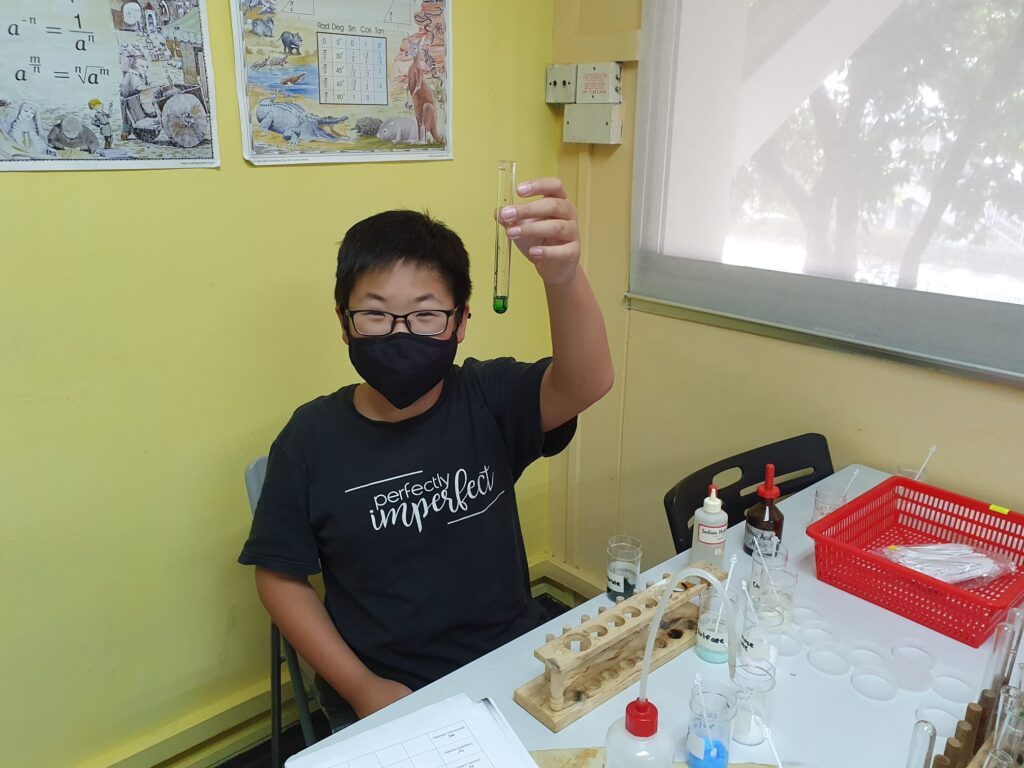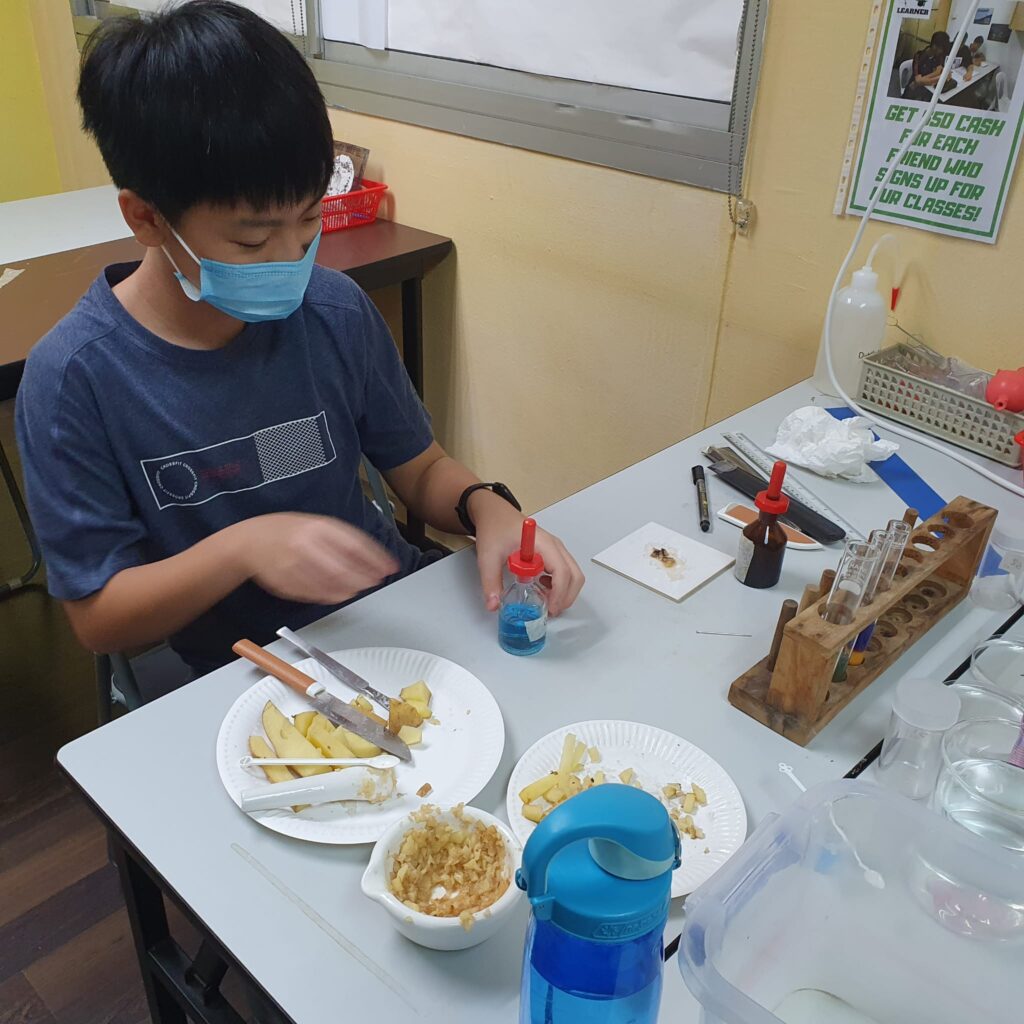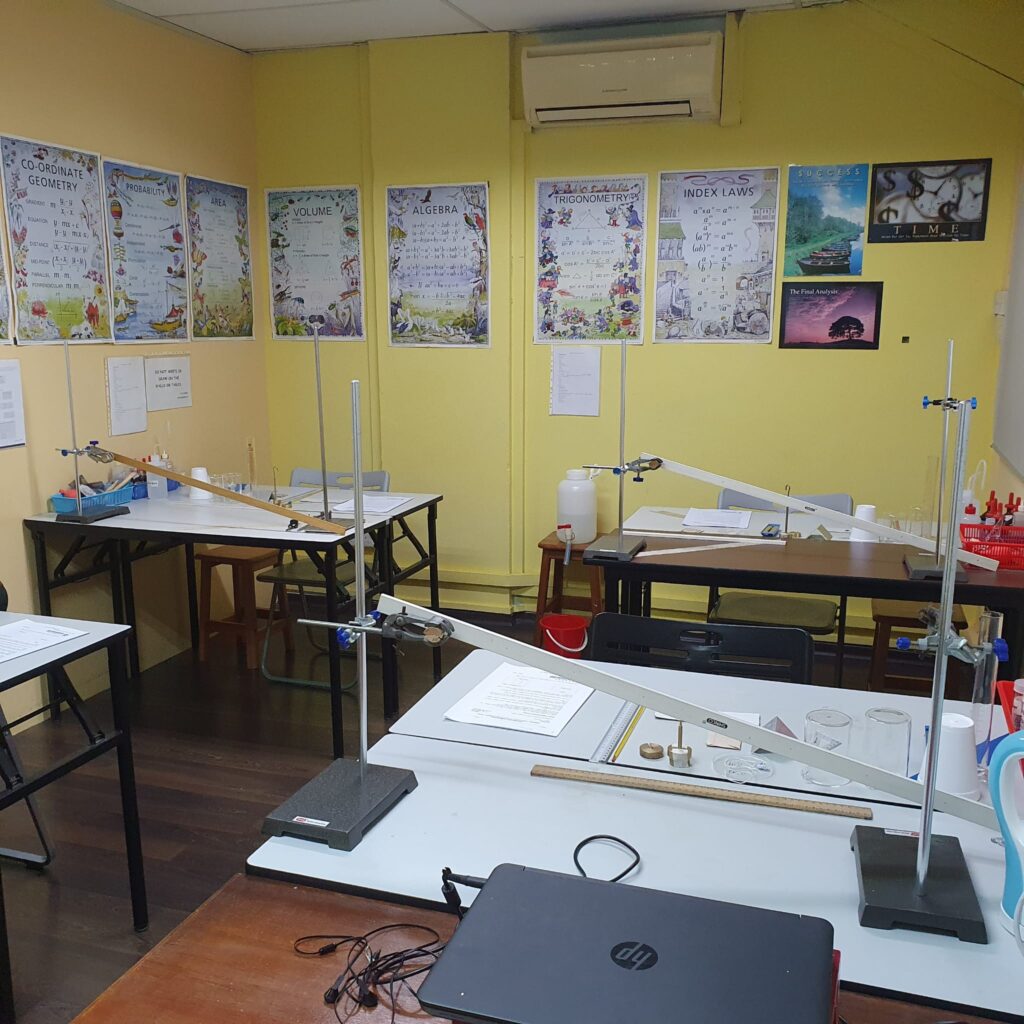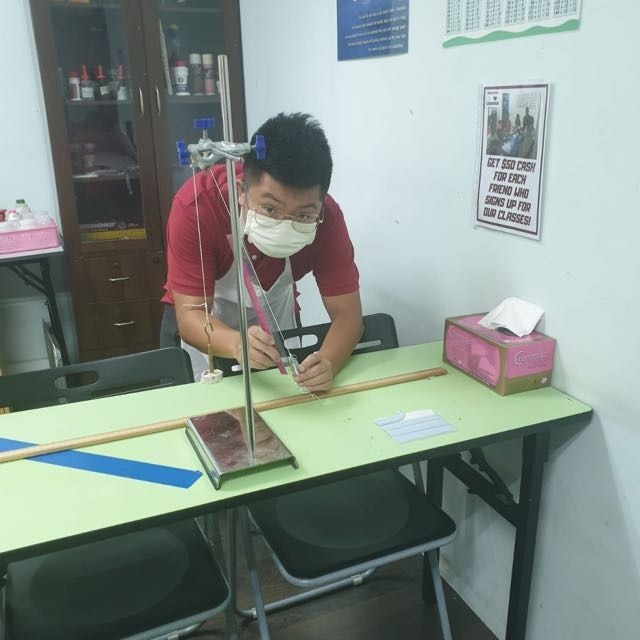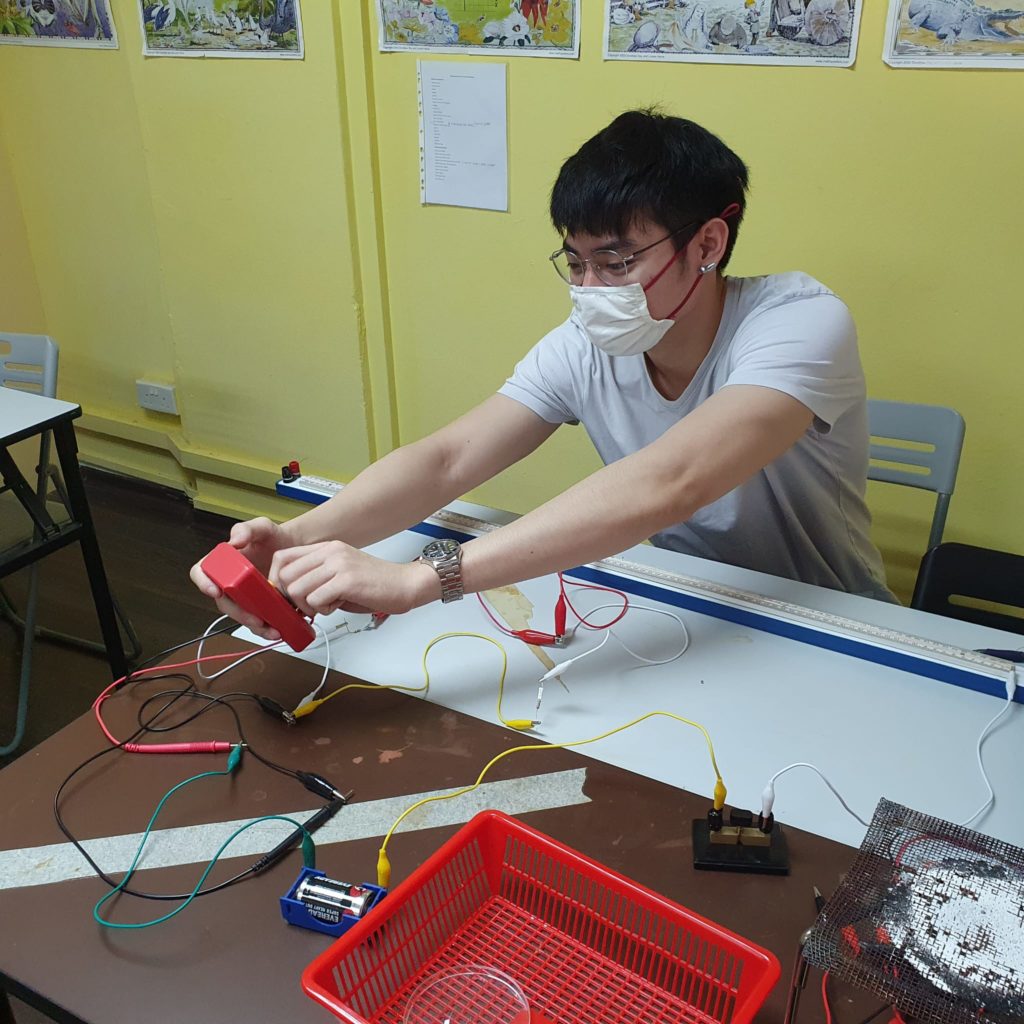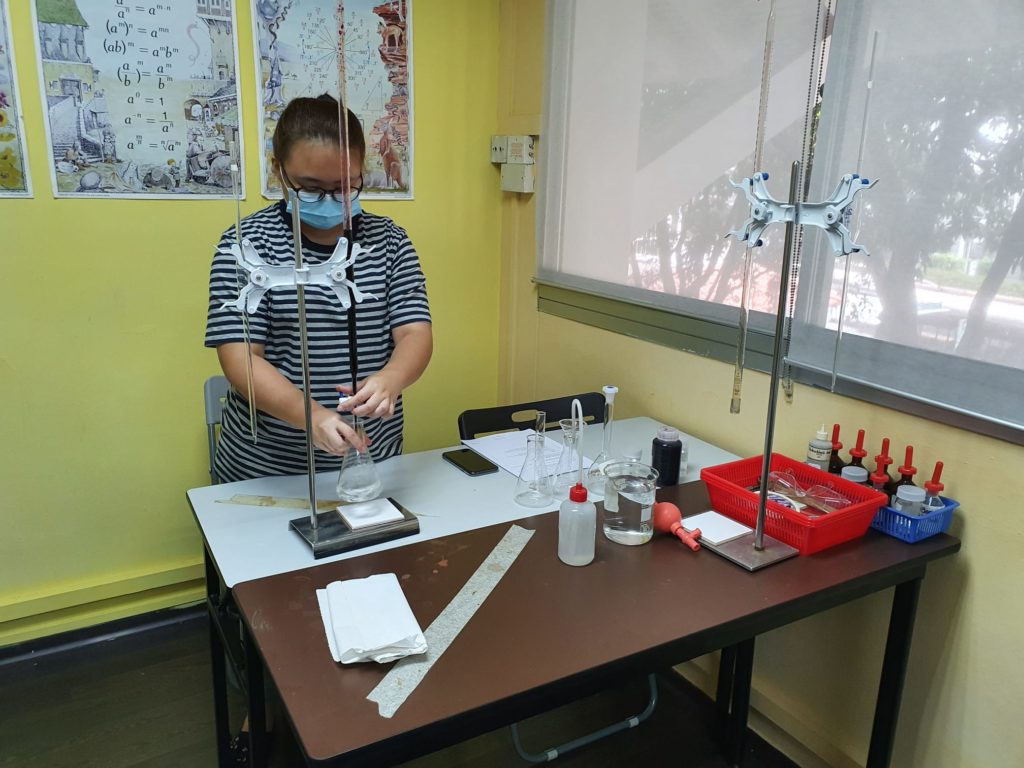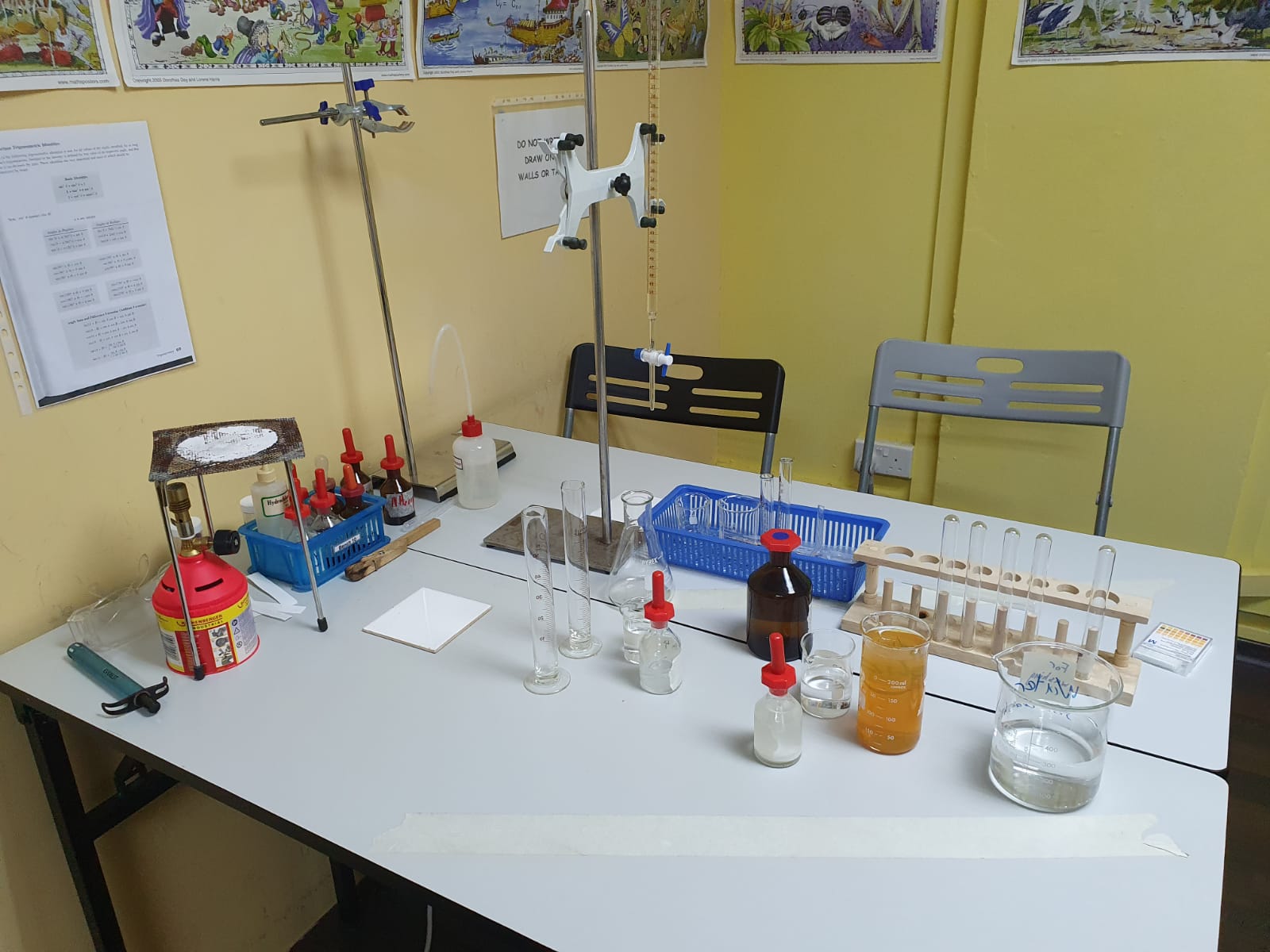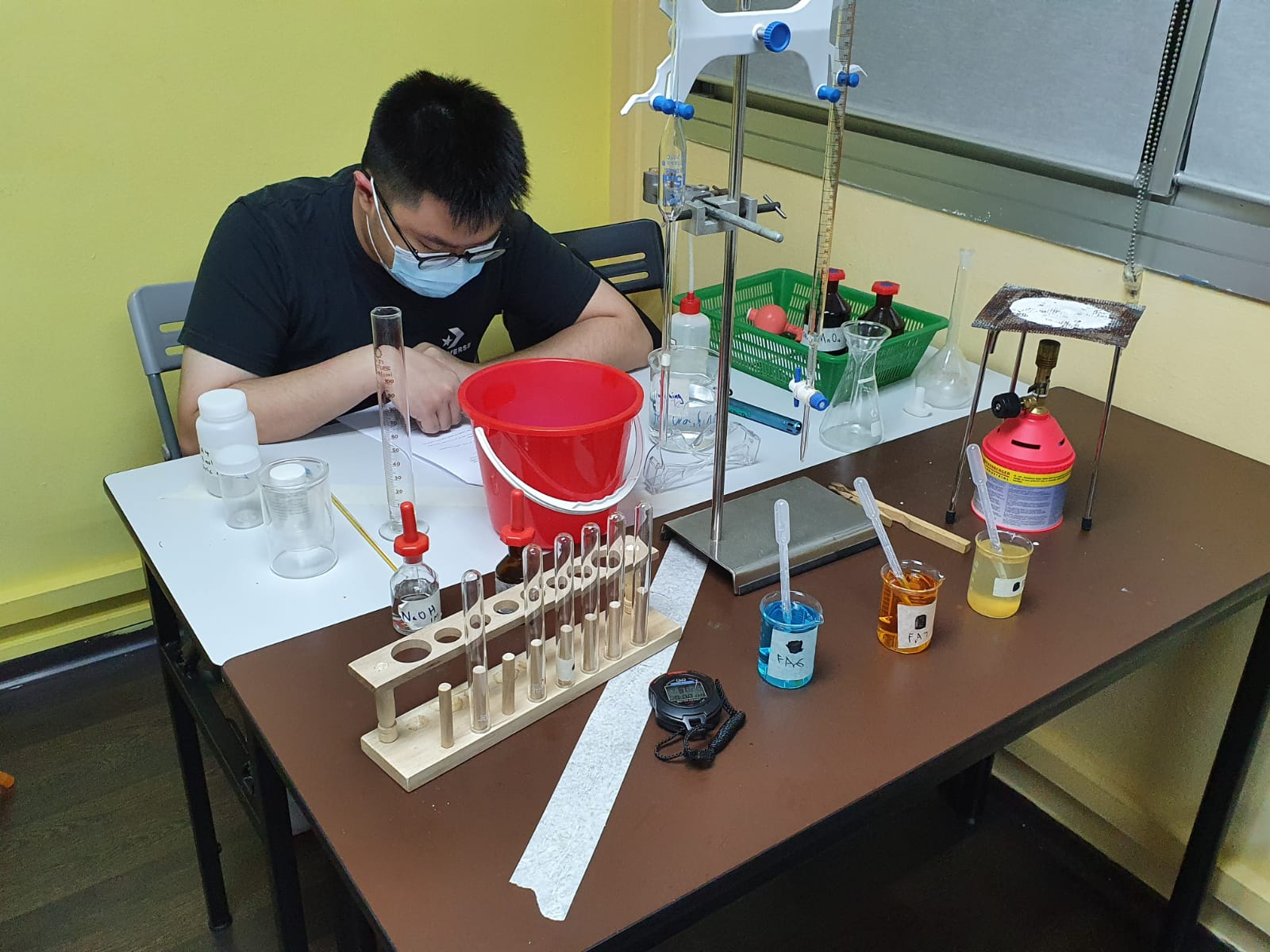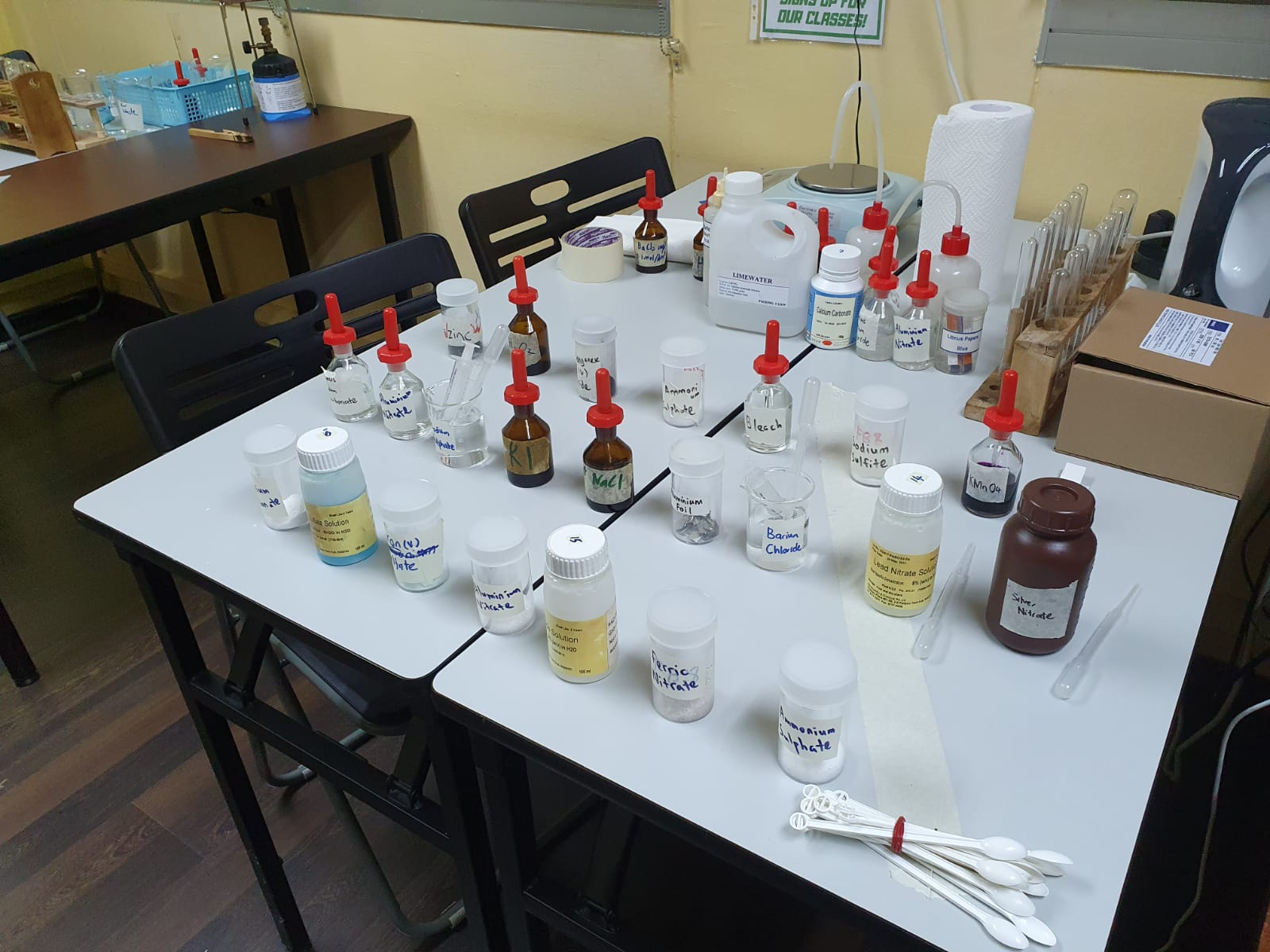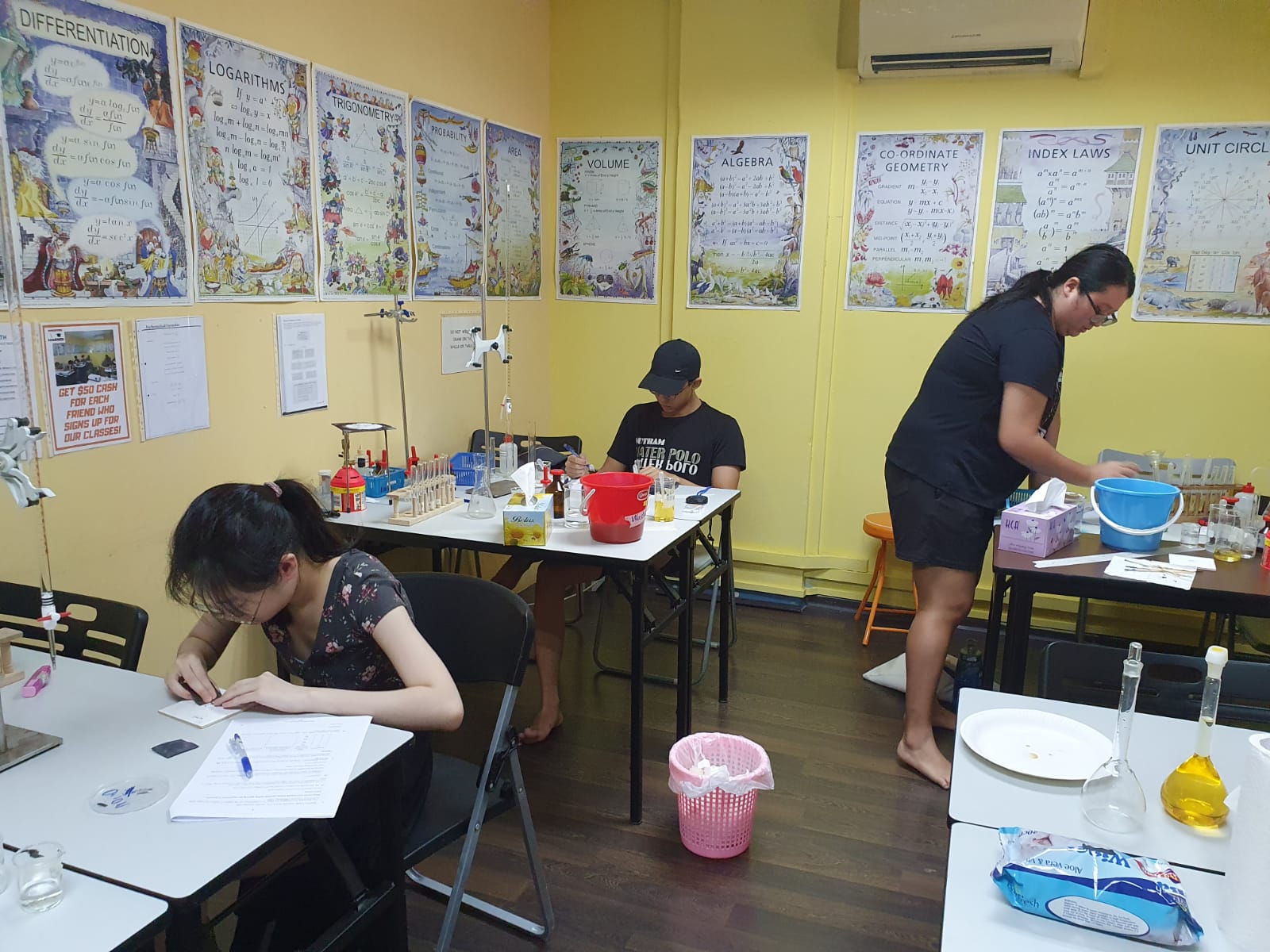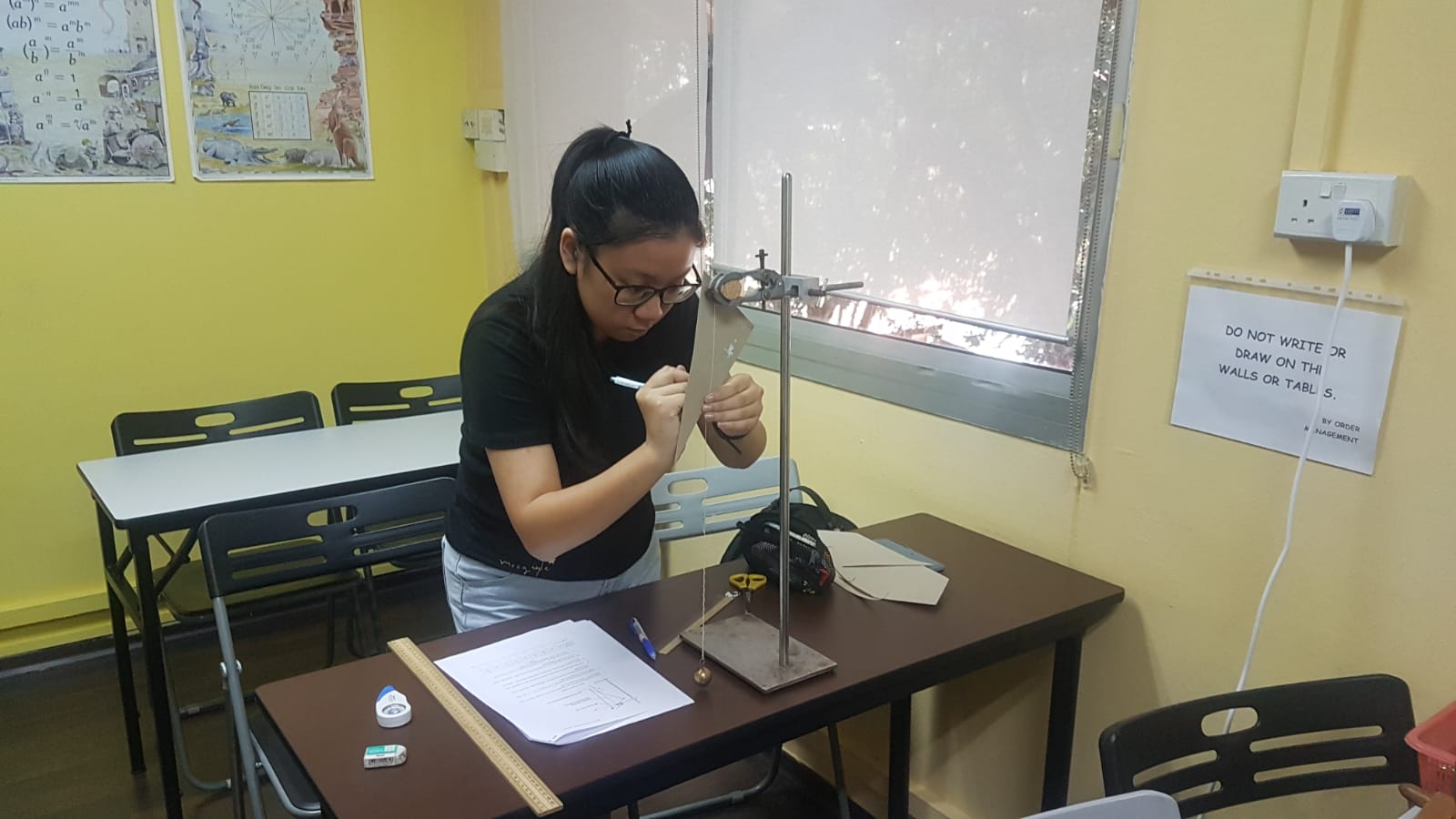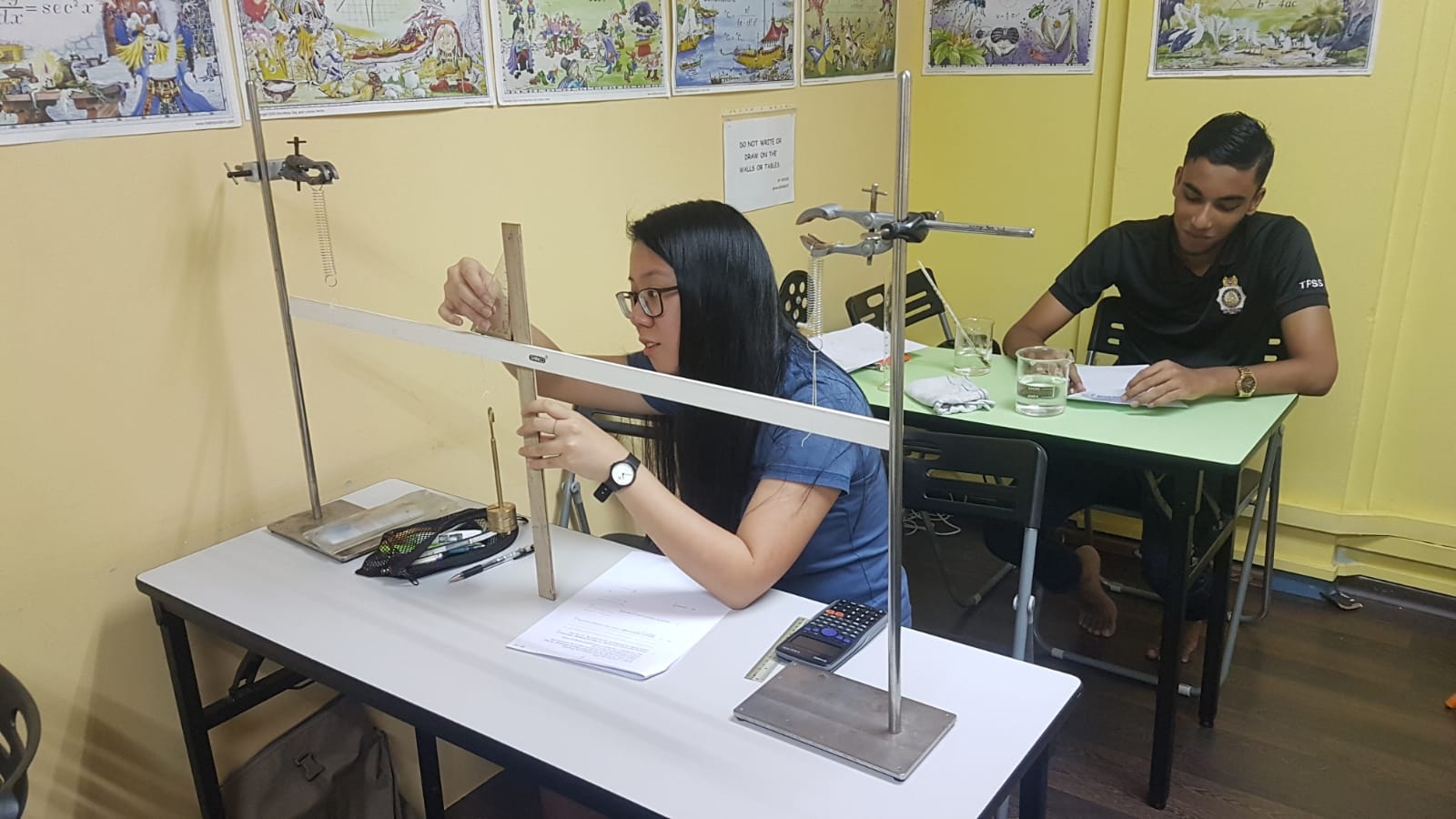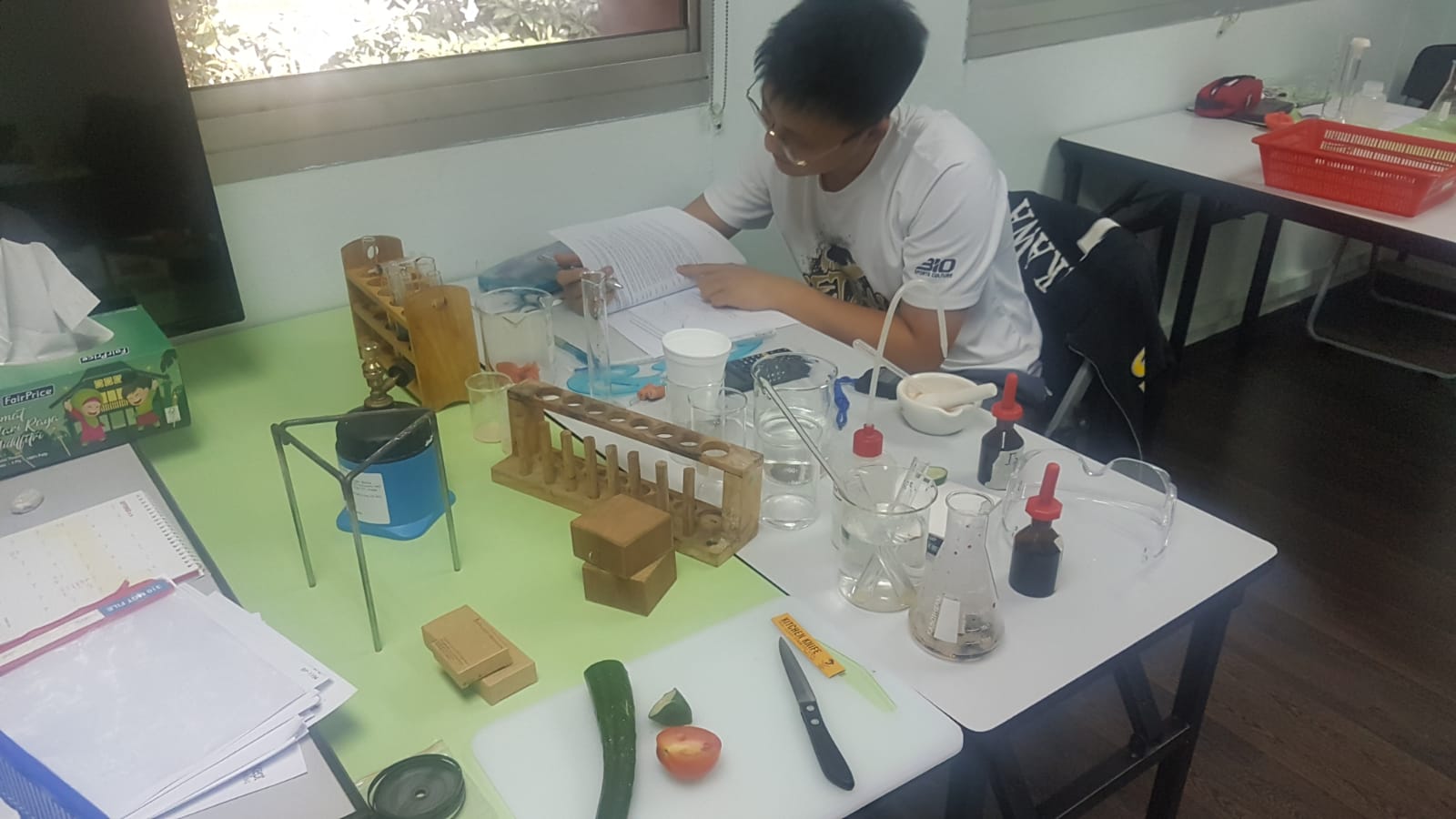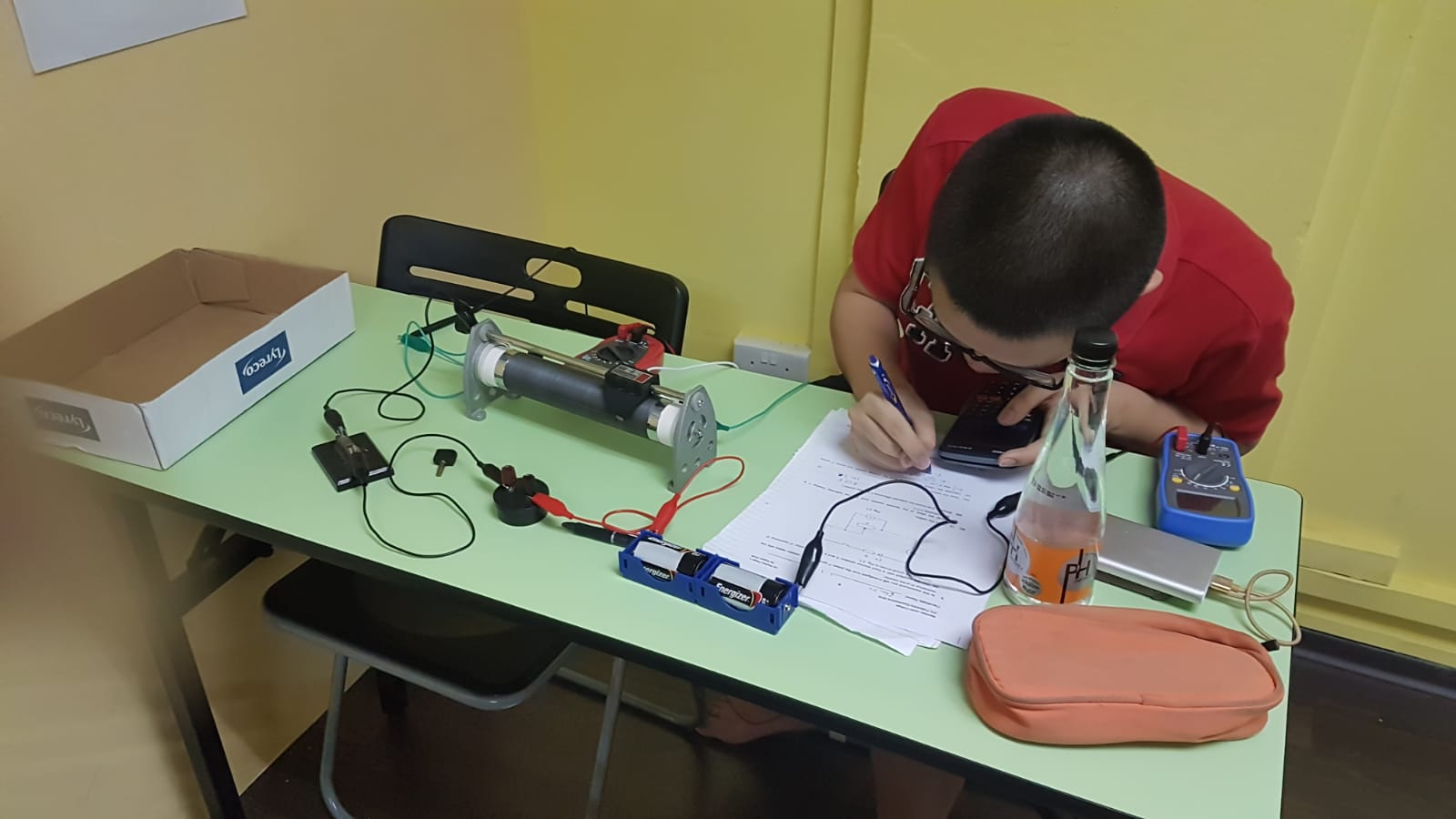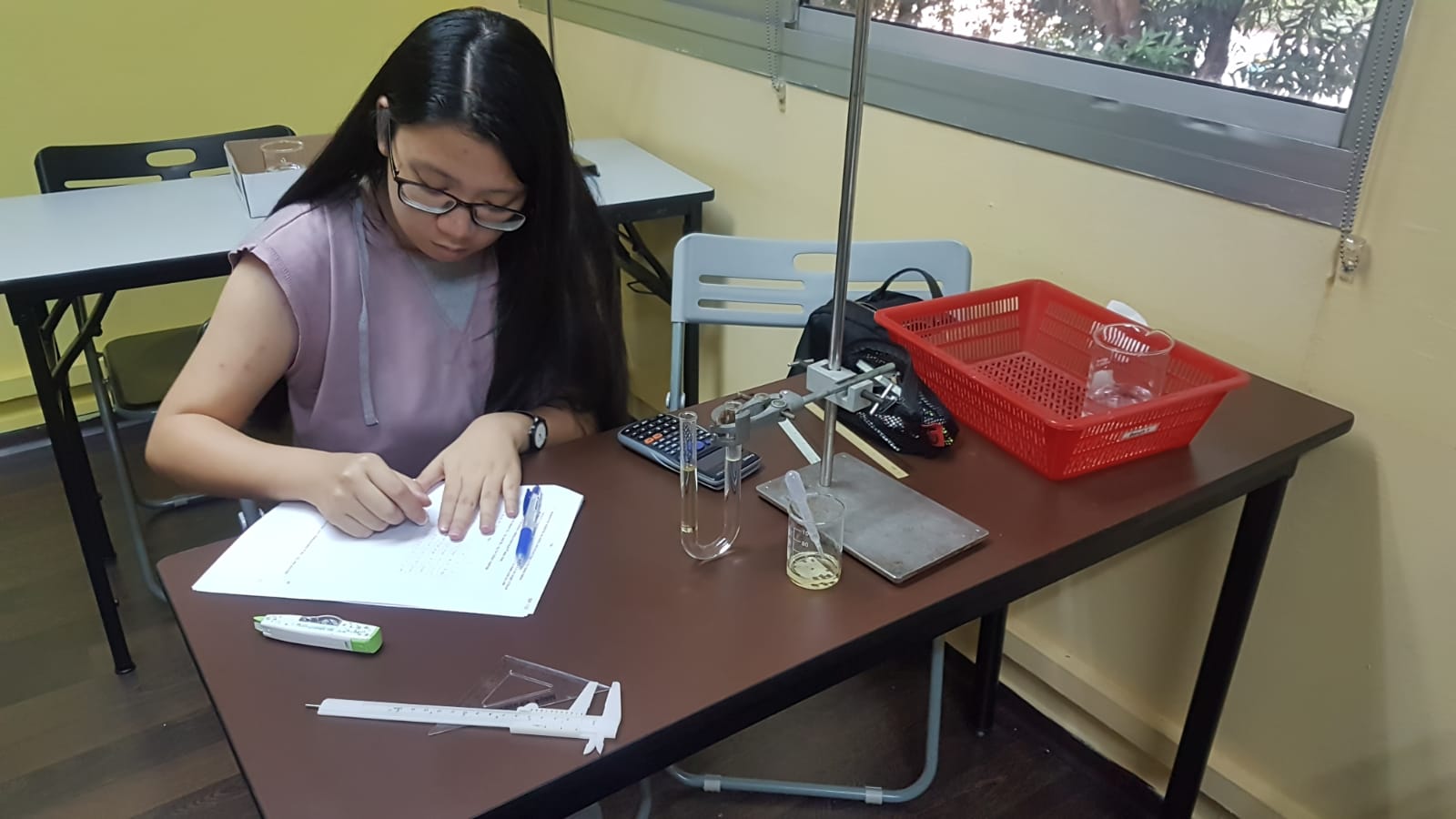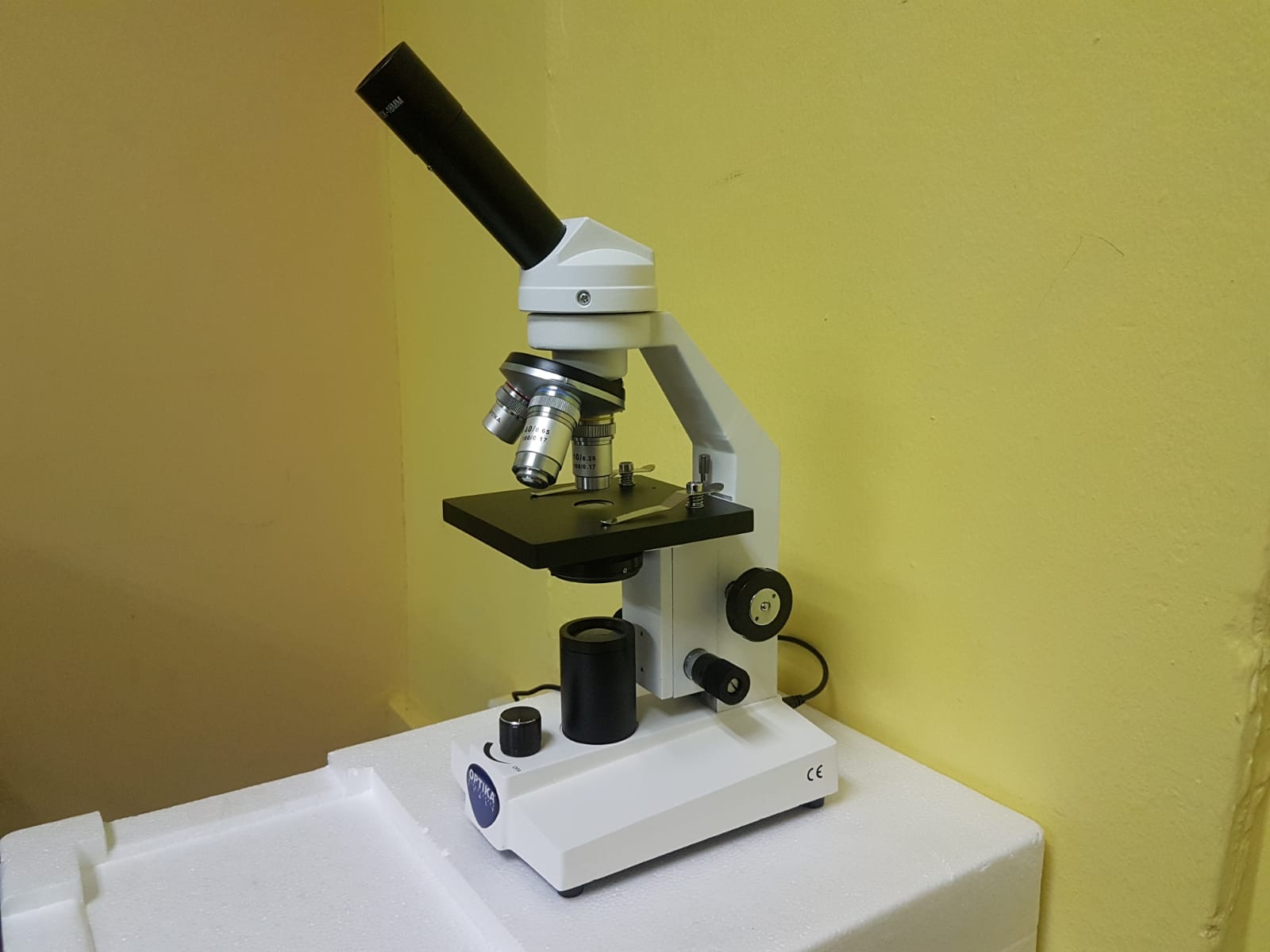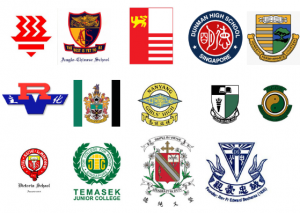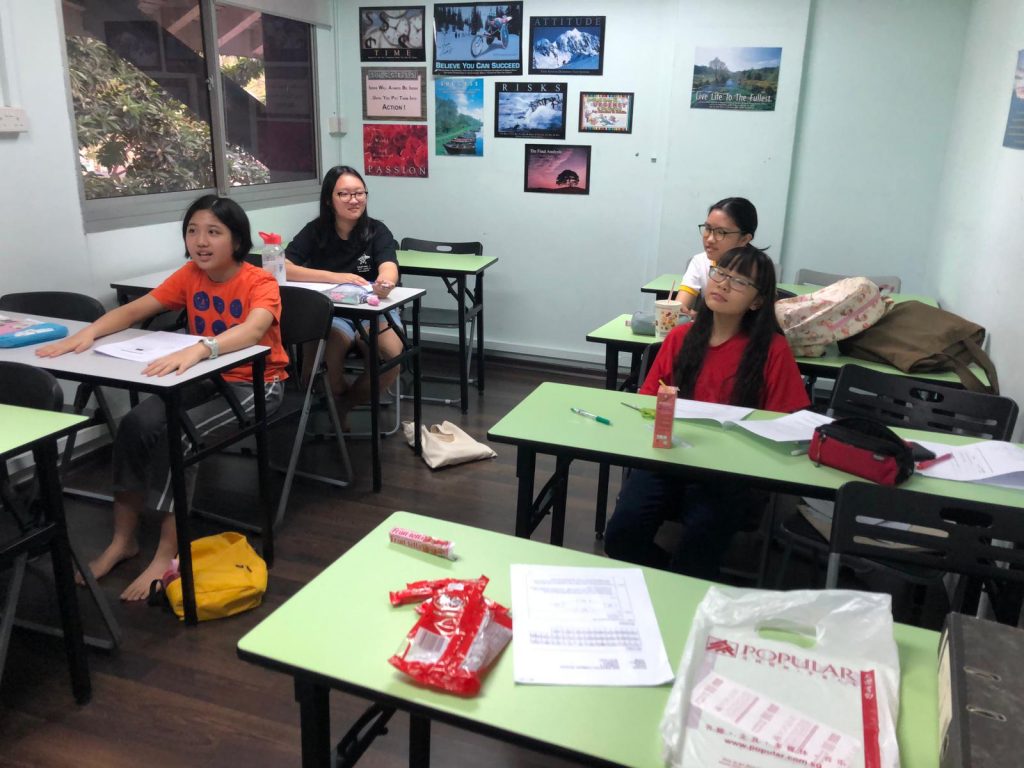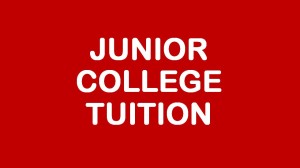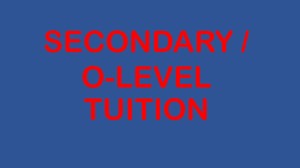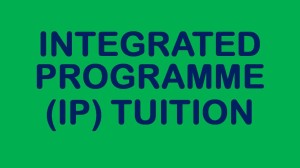Topics: Mechanics, Light, Electricity
Skills and Content for Mechanics: How to draw a good table and how to record data with correct units and decimal places; How to assign the correct number of significant figures for calculated data; How to plot a good graph with appropriate scales and axes; How to draw a best-fit straight line or curve and how to calculate gradients; Hands-on practice with Oscillation experiment.
Skills and Content for Light: Hands-on practice with Light experiment involving a thin converging lens or a glass block. Revision on sources of error for common experiments; How to identify and properly describe sources of error.
Skills and Content for Electricity: Quick revision on how to use various electrical apparatus such as the ammeter, voltmeter, rheostat and potentiometer with hands-on practice via an Electricity Experiment.
Dates: (Tue 17th June 2025, 10am-1pm) OR (Tue 24th June 2025, 2pm-5pm)
Location: Singapore Learner @ Blk 644, Bukit Batok Central, #01-68. S(650644)
Fee: $360 | $280 (if payment made before May)
Booking is by full payment (non-refundable) only. Kindly send a message to +(65) 88765498 (WHATSAPP) for payment info. Thank you.
Singapore Learner
Tel: +(65) 6569 4897, +(65) 88765498 (WHATSAPP)
For Standard Practical Training, click here:
O-LEVEL PRACTICALS
For Practical Mock Exam, click here:
MOCK EXAMS FOR SCIENCE PRACTICAL (Sep & Oct)
Other Crash Courses:
O-LEVEL PURE CHEMISTRY HANDS-ON PRACTICAL CRASH COURSE
O-LEVEL PURE BIOLOGY HANDS-ON PRACTICAL CRASH COURSE
Math/Science Project work consultancy for Secondary to JC students
Adapting to the ever changing landscape of Singapore’s Education is the number 1 priority to Singapore Learner as we aim to maintain our standard of always being nimble and at the forefront of education theory as well as assessment in Singapore.
The recent changes to the education system in 2023 has brought about a new element assessment, which is the addition of groupwork style assessment in place of Pen and Paper Worked Assessment or Mid Year Examination. It is our great pleasure to announce that Singapore Learner has another feather in our cap, and we will launch an adhoc consultation service for students who are looking for guidance (including preparing of presentation slides, presenting skills, assessment of presentation), learning space, as well as equipment, as they work on their new groupwork assessments.
Why us? As experts in both Integrated Programme (who place a strong emphasis on critical thinking via project based assessment) and Practical Examinations at the O/A-level , as well as being equipped with masters in education for curriculum and teaching from NIE, we are highly qualified as consultants and mentors when it comes to open-ended group project work as well as providing a conducive environment to guide students through their group work journey, using our years of experience as well as a fully functioning science lab.
Pricing:
Consultation costs will be pro-rated to our normal lesson costs depending on the level of the student. Costs of materials and preparation of lab will be pro-rated to basic material costs and charged separately. For students who require materials that are outside of the common lab materials, the tutors will order online accordingly
Timeslots:
Sat 9am – 1030am, 1045am – 1215pm
Sun 9am – 1045am, 230pm – 4pm
Further changes to timeslots to be discussed with the tutor
Our tutors:
Please arrange for your student group to come to the same timeslot in a timely fashion, confirmation with payment is expected at least 3 days in advance due our staff having to prepare the lab equipment as well as preliminary research
Mr Pang: Mr Pang graduated with a B.Eng(Honors) from NUS, and has been coaching students in O-level/IP and A-level Mathematics and Science for more than 5 years. An alumnus of RVHS(IP) and an experienced tutor in IP/A-level education, Mr Pang is a results oriented tutor whose students do very well in exams through efficient learning methods and exam preparation skills. Mr Pang employs a variety of teaching methods to cater to every type of learner, as well as teaching them the skill of self diagnostics, giving them the ability to constantly spot and rectify their own errors. He takes pride in inspiring his students to become confident learners and critical thinkers. He is in the midst of pursuing and completing his master of education in curriculum and teaching from NIE.
Mr Muhammad: An NIE-trained Teacher, Mr Muhammad has been coaching students in O-Level & IP Chemistry, Physics and Math for more than 12 years. An alumnus of Raffles Institution, Mr Muhammad holds a a Bachelor of Science degree from the NUS as well as a Master of Education (Curriculum & Teaching) degree from the National Institute of Education. Mr Muhammad’s thinking and metacognitive approaches to problem solving has helped many students of varying abilities to excel in Math and the Sciences. He has coached students from many different schools and streams, including IP, SAP, and IB.
Contact us:
Singapore Learner @ Bukit Batok
Address: Blk 644, Bukit Batok Central, #01-68. S(650644).
Tel: 6569 4897, 8876498 (WHATAPPS) http://wa.link/w0xxk2
Email: singaporelearner@gmail.com
If you wish to visit us, kindly make an appointment first. Thank you.
JC1 and JC2 Math Prelim Re-Learning Classes
These classes are designed for JC1 and JC2 students who are behind on their revision coming into their prelim exams, especially for JC2 students who have forgotten or did not do well in topics previously covered in JC1. Content mastery will be covered first before moving on to past year papers and timed exercises. Consultation after class is strongly encouraged during the entirety of the revision period. There is usually an additional 15-30 minutes of after class time for additional consultation, students are also encouraged to make use of online consultation whenever they are stumped in their revision. Below are some of the common revision topics based on our analysis of current trends in H1 and H2 Math.
H1: Indices and Surds, Graphing and Transformation, Differentiation, Integration, Permutations and Combinations, Probability, Hypothesis Testing
H2: APGP, Functions, Graphing and Transformation, Vectors, Complex Numbers, Differential Equations, Applications of Differentiation, Applications of Integration, Permutations and Combinations, Probability, Hypothesis Testing
For enquiries, Whatsapp 88765498 (Admin)
Integrated Programme Math and Sci Re-learn for WA3 and EOY exam
These revision classes are designed for Integrated Programme Y1-Y4 students who have not performed up to expectations for their exams, as well as students who have had Project or experiment based WA exams who are unsure of their current content mastery and ability to perform. With our intensive classes, students will be able to catch up in time for WA3 and EOY exams. Here are some of the key revision topics that we will be drilling in class based on our analysis of current IP exam trends.
Y1 Sci: Diffusion and Osmosis, Transport systems (plant, human circulatory), Light, Elements, compounds and mixtures, Solutions and Suspensions, Kinetic Particle Theory, Heat
Y1 Math: Algebra, Expansion and Factorization, Map Scales, Simultaneous Equations, Coordinate Geometry, Number Patterns and Real Life word problems (hire purchase and interest rate)
Y2 Sci: Atomic structure and bonding, Acids and Alkalis, Chemical Reactions, Electricity, Forces, Work Energy Power, Nutrition, Digestive system, Ecology
Y2 Math: Algebraic fractions and manipulation, Changing subject of formula, Quadratic Equations, Proportion, Trigonometry, Coordinate Geometry, Indices and standard form
Y3 Math: Quadratic Equations, Polynomials, Remainder and Factor theorem, Indices and Surds, Logarithms and Exponents, Coordinate Geometry, Trigonometry 1 and 2 (ASTC, identities, bearings)
Y4 Math: Differentiation, Integration, Matrices, Vectors, Inequalities and Modulus Function, Functions, Probability
Parents and students who are interested, do contact us and provide your level, school, and current grade/topics for revision so we can find a class that is best suited for your needs. Classes can be conducted either on a weekly basis, one to one, or intensive revision period thats best designed for your schedule. Additional classes will be pro-rated accordingly
For enquiries, whatsapp 88765498 (Admin).
GETTING READY FOR A PHYSICS PRACTICAL
Why Us?
-
Our teachers are highly qualified and very experienced, and we actually TEACH you good practical techniques.
-
We have been a one-stop comprehensive science practical centre providing solid practical training for ALL THREE sciences and for all levels and streams since 2017.
-
Our laboratory apparatus are exam-grade and the same as those used in MOE schools and our chemicals are all NEA-approved.
-
We have a structured practical training programme catering to the needs of both beginners and experienced students.
-
We have a maximum class size of just 5 students! Yes just 5 students at most, so that the teacher is able to observe the actions of each student more closely and demonstrate the correct practical techniques where and when necessary.
-
Beyond basic training, our lab sessions are FULL EXAM PAPERS consisting of 2 to 3 questions each of multiple topics, including the PLANNING question.
New scheme of work post removal of MYEs in IP Secondary schools
REMOVAL OF MYES IN INTEGRATED PROGRAMME MATHEMATICS AND SCIENCE
The removal of mid-year exams will help nurture the joy of learning, and in place of these exams, schools have the freedom and time to design and provide a variety of learning experiences. Student’s understanding and mastery of content will be checked via assignments, quizzes, and classroom interactions. (Dep Director General of Education, MOE / link: https://www.moe.gov.sg/news/forum-letter-replies/20220317-removal-of-mid-year-exams-will-help-nurture-joy-for-learning)
So for Integrated Programme students, who are clearly university bound, how does this affect their learning and preparation for university admissions via assessment? How will the new assessment criteria look like? Are there any additional things in particular to look out for on this new educational journey? This post will serve to share with parents of IP students on the new changes made, and potential impacts, in an attempt to alleviate any insecurities or doubts.
*Disclaimer: While IP schools are expected to follow MOE’s lead in the removal of exam based learning at the first half of the year, they still have some level of freedom to implement written Worked Assessments as they see fit in the form of quizzes and various other assessment tools, so content mastery is still integral in doing well*
1.What has replaced the MYEs or standardized testing for the first half of the year?
In IP schools, projects have always been a big component since its inception. Upon the removal of MYEs, several schools have introduced a project based assessment style for Mathematics as well as Science. A brief overview of project based assessment:
-Science: For the sciences, projects are often based on building, either team building or a solo project. Some of the examples I have seen from my students are: building a trebuchet, building a soda-pop rocket, building a cardboard boat, building a circuit, building a protection system for an egg, or alternatively an investigation based project which is heavy on fieldwork, e.g. finding purity of water in certain areas, density of rocks, nutrition in daily household foods etc. There are resources online to assist with understanding these building projects, however the mode of assessment is in a highly localized context, and will be difficult to just replicate based on online guides.
Another aspect of assessment in Science would be practical assessment. For Y1-Y2 students, a watered down version of the O-level practical exam is presented as a worked assessment in place of a full content based written test, and usually very focused on chemistry (the study of observation of reactions, proper presentation of facts and figures, basic experimental skills) . These tests are often based on real O-lvl practical experiments, such as optical pins for refraction, potential divider circuit, titration, and transport system in plants.
-Mathematics: Similar to science, Math assessment will be modified to a project based assessment, with the exception of a practical exam since there is no practical component in the A-level. Most Math project based assessment involve the use of online tools such as Graphmatica in order to illustrate Math concepts in graphs and subsequently in a 3D form. Concepts tested are usually on vectors, coordinate geometry, simultaneous equations, quadratic equations, Trigonometry. Students can be expected to build a structure using online graphing tools, or to model a certain phenomenon using Mathematical equations covered during class time. There is usually one written test for Math at the first half of the year on top of their projects.
2. How will the assessment criteria look like?
Science: Projects are often assessed based on a simple set of rubrics, for innovativeness in design, application of content knowledge in observation/deduction/building, quality and structure of final report, as well as budgetary constraints and usage. For Practical exams, standard O/A level rubrics and keywords are applied. Students are expected to read up on their O-level textbook in preparation
Math: Similar to Science, there is a simple set of rubrics, but more focused on accuracy and precision of modelling, as well as constraints in real life, and how those constraints affect the project results. Formulating equations is a big part of the assessment, students are expected to be able to formulate equations based on their content knowledge and context of the project. Guides on this are harder to find, so light plagiarism from online sources or assistance from Artificial Intelligent like Chatgpt and Google Bard might not be very useful.
3. Additional things in particular to look out for
As explained in our previous guides, for IP students, it is heavily hinted and recommended for them to read and do ahead using O-level text before the start of the content lecture. Our suggestion here at Singapore Learner would be using the Marshall Cavendish O-level pure Science textbooks for Science readings, and the New Syllabus Mathematics textbooks, for both E and A math. Many of the ideas for projects can be found in these books.
Another problem to look out for is that WAs, quizzes and small tests may not be a strong indicator of ability to take a full test. While the removal of MYEs and CTs in the first half of the year is a welcome change, the discipline, muscle memory, and pace of a full test with all topics tested requires a certain level of rigor and attention to detail. With many schools having a 60-70% weight on final year exam grading, students are still very much expected to keep pace with their theory skills despite the great focus on projects and practical during the first half of the year. Parents will have to watch out on how much time students are spending on their projects, whether its effective or not, and to keep pace with their theory content in lectures and tutorials.
The time of release of this post is June holiday 2023. From what we gather, based on our experience with IP students as well as our training in NIE, there is a big push for the theme of sustainability in schools. The context of project based or practical based assessment will be heavily leaning towards sustainability if possible. Students should have a strong exposure to understanding of sustainability, at least within a local context. Examples include, green energy such as electricity saving circuits, converting kinetic energy to other useful forms of energy, anti pollution in chemistry and biology, as well as nutritional science.
So after surviving through several long paragraphs of educational jargon, we finally reach the end of the post. I hope this alleviates some of the worries of parents and provide a clearer picture for assessment. As a tuition group that is heavily invested into the practical aspect of education, we aspire to be at the forefront of this new change in assessment and have begun establishing ourselves as a market leader in practical and project based education since the year 2018. As one of the pioneer specialists in the IP tuition market, we have been consulting for our curernt students in project based assessment for more than a decade, since the inception of the Integrated Programme. If you are a parent that is feeling particularly lost in this new scheme of work for your IP school going child, and would like for him/her to be trained by our professional team of tutors, do not hesitate to reach out to us.
Our contact: 6569 4897 or 8776 2711
From our IP team:
Mr Pang and Mr Ilyasa, NUS faculty of Engineering/Science, NIE(curriculum and teaching)
IP Y1 Lower Sec Science Relearning Oct-Dec 2024

Start Date: Oct 2024 | End Date: 15 Dec 2024
Location : Blk 644, Bukit Batok Central, #01-68, S(650644) or Online classroom via Google Meet
Focus: CONCEPTUAL UNDERSTANDING & APPLICATION OF SKILLS
Format: Teaching + Worksheets + Discussions
Target Group: Current Y1- students who obtained a grade of B4 or lower in their IP Sci SA2/EOY/Final Exam. We will be focusing on the basics of Physics, Chemistry and Biology to prepare them for IP Y2 2025.
Time : Monday to Friday (7/11 – 31/11) from 3PM – 9PM, Monday to Friday (1/12 – 31/12) from 3pm-9pm
$360/month for Y1-Y4, 1.5h per lesson, 4 lessons a month
Background of Tutor:
An NIE-trained Teacher, Mr Ilyas has been coaching students in O-Level & IP Chemistry, Physics and Math for more than 12 years. An alumnus of RI and RJC, he holds a Master of Education (Curriculum & Teaching) degree from the National Institute of Education, as well as a Bachelor of Science degree from the National University of Singapore.
UNDERSTANDING OUR INTEGRATED PROGRAM TUITION
IP Y2 (2025) Lower Sec Science Headstart
Start Date: Oct 2024 End Date: 15 Dec 2024
Location 1: Blk 644, Bukit Batok Central, #01-68, S(650644) or Online classroom via Google Meet
Focus: CONCEPTUAL UNDERSTANDING & APPLICATION OF SKILLS
Format: Teaching + Worksheets + Discussions
Target Group: Current Y1 students who need a headstart in advanced topics for IPY2
Time : Monday to Friday (1/11 – 31/11) from 3PM – 9PM, Monday to Friday (1/12 – 31/12) from 10am-3pm, Sunday 1045am-1215pm
$360/month for Y1-Y2, 1.5h per lesson, 4 lessons a month
Background of Tutor:
An NIE-trained Teacher, Mr Ilyas has been coaching students in O-Level & IP Chemistry, Physics and Math for more than 12 years. An alumnus of RI and RJC, he holds a Master of Education (Curriculum & Teaching) degree from the National Institute of Education, as well as a Bachelor of Science degree from the National University of Singapore.
UNDERSTANDING OUR INTEGRATED PROGRAM TUITION
For enquiries, whatsapp 88765498 (Admin).
SCIENCE PRACTICAL PROGRAMME
LOOKING FOR THE BEST PLACE TO DO YOUR SCIENCE PRACTICALS? JOIN US!
We provide A-Level / H2 / IP and O-Level Physics, Chemistry, Biology and Science (Physics/Chemistry/Biology) Practical Training for private / school candidates and homeschoolers, for both local (eg. H2, Singapore-Cambridge) and international exams (CIE, IB, IGCSE).
Why Us?
-
Our teachers are highly qualified and very experienced, and we actually TEACH you good practical techniques.
-
We have been a one-stop comprehensive science practical centre providing solid practical training for ALL THREE sciences and for all levels and streams since 2017.
-
Our laboratory apparatus are exam-grade and the same as those used in MOE schools and our chemicals are all NEA-approved.
-
We have a structured practical training programme catering to the needs of both beginners and experienced students.
-
We have a maximum class size of just 5 students! Yes just 5 students at most, so that the teacher is able to observe the actions of each student more closely and demonstrate the correct practical techniques where and when necessary.
-
Beyond basic training, our lab sessions are FULL EXAM PAPERS consisting of 2 to 3 questions each of multiple topics, including the PLANNING question.
You may need science practical lessons if you are a private candidate who needs a science lab and apparatus as well as practical coaching, or you are a school candidate who needs more practical training to get top grades.
School candidates (in govt sec schools, IP schools and JCs) who need more FULL PRACTICAL PRACTICE are also welcome, as you seldom get to complete a full practical in school (1.5 hrs for Combined Science practical exam, 1hr 50 min for Pure Science practicals, and 2hr 30 min for H2 practicals), mainly due to lack of curriculum time.
If you are a private school or tutor who needs a science lab or practical training for your students, you are also advised to contact us early to work out the details such as course curriculum, lab worksheets, scheduling and fee matters.
For details on Practical Courses, Mock Exams or Schedules, kindly click on any of the following links relevant to the exam and level you will be doing:
To proceed, please click on one of the following:
A-LEVEL H2 PRACTICALS
CIE A-LEVEL PRACTICALS
IB DIPLOMA INTERNAL ASSESSMENT (IA)
O-LEVEL PRACTICALS
IGCSE PRACTICALS
INTEGRATED PROGRAMME (IP) PRACTICALS
SEC 3 PRACTICALS
A-LEVEL JUNE HOLIDAYS SCIENCE PRACTICAL REVISION
O-LEVEL JUNE HOLIDAYS SCIENCE PRACTICAL REVISION
SEPTEMBER HOLIDAYS SCIENCE PRACTICAL REVISION
MOCK EXAMS FOR SCIENCE PRACTICAL (Sep & Oct)
PRACTICAL CRASH COURSES
Singapore Learner @ Bukit Batok
Blk 644, Bukit Batok Central, #01-68. S(650644).
Tel: +(65) 6569 4897, +(65) 88765498 (WHATAPPS) http://wa.link/w0xxk2
Email: singaporelearner@gmail.com
If you wish to visit us, kindly call or sms first. Thank you.
IPY1/JH1/SEC1 (2025) MATH ALGEBRA & INDICES HEAD START
IPY1/Sec 1 Math is heavy on algebraic manipulation and logic, as compared to the PSLE which uses models and units. The KEY to acing IPY1/Sec1 Math is to understand fully how to deal with NEGATIVE NUMBERS as well as ALGEBRAIC EXPRESSIONS and INDICES (which is an O-level topic tested in lower secondary IP). This course will EQUIP students with the necessary skills to keep up or stay ahead of the Y1/S1 math syllabus.
Day and Time: Fridays, 10am – 12pm.
Dates: 29/11, 6/12, 13/12, 20/12, 27/12,
Location : Online via Zoom or Blk 644, Bukit Batok Central, #01-68, S(650644).
Target Group: For post-PSLE students who are highly interested to do well in Secondary Math.
Purpose: To give students a HEAD START in the TWO MOST IMPORTANT TOPICS of secondary Math – Algebra and Indices, as students who struggle with secondary math are usually those who are still stuck in PSLE style question solving.
Focus: CONCEPTUAL UNDERSTANDING
Format: Teaching + Discussions
Course Fee: $300
Registration fee: $20
Total: $320
As places are limited, pre-payment is necessary to confirm your attendance.
For enquiries, please message the Tutor at 97860411. Thank you!
Singapore Learner @ Bukit Batok
Address: Blk 644, Bukit Batok Central, #01-68. S(650644).
Tel: 6569 4897, 88765498 (WHATSAPP) https://wa.link/w0xxk2
Email: singaporelearner@gmail.com
Background of Tutors:
Mr Pang graduated with a B.Eng(Honors) from NUS, and has been coaching students in O-level/IP and A-level Mathematics and Science for more than 5 years. An alumnus of RVHS(IP) and an experienced tutor in IP/A-level education, Mr Pang is a results oriented tutor whose students do very well in exams through efficient learning methods and exam preparation skills. Mr Pang employs a variety of teaching methods to cater to every type of learner, as well as teaching them the skill of self diagnostics, giving them the ability to constantly spot and rectify their own errors. He takes pride in inspiring his students to become confident learners and critical thinkers.
An NIE-trained Teacher, Mr Ilyas has been coaching students in O-Level & IP Chemistry, Physics and Math for more than 12 years. An alumnus of RI and RJC, he holds a Master of Education (Curriculum & Teaching) degree from the National Institute of Education, as well as a Bachelor of Science degree from the National University of Singapore.
UNDERSTANDING OUR INTEGRATED PROGRAM TUITION
TUITION CLASSES:
EDUCATIONAL SERVICES:
